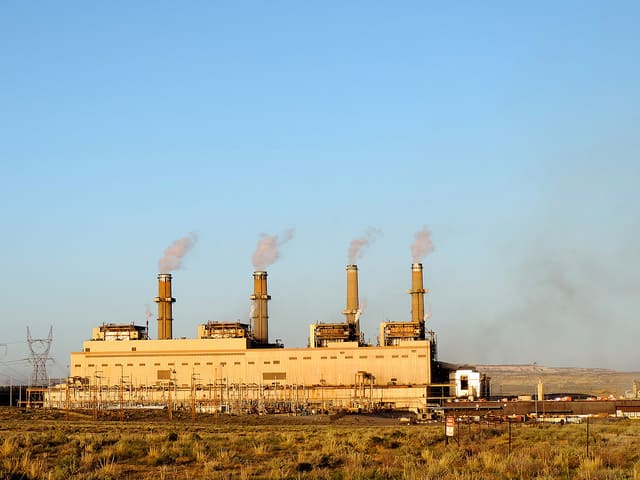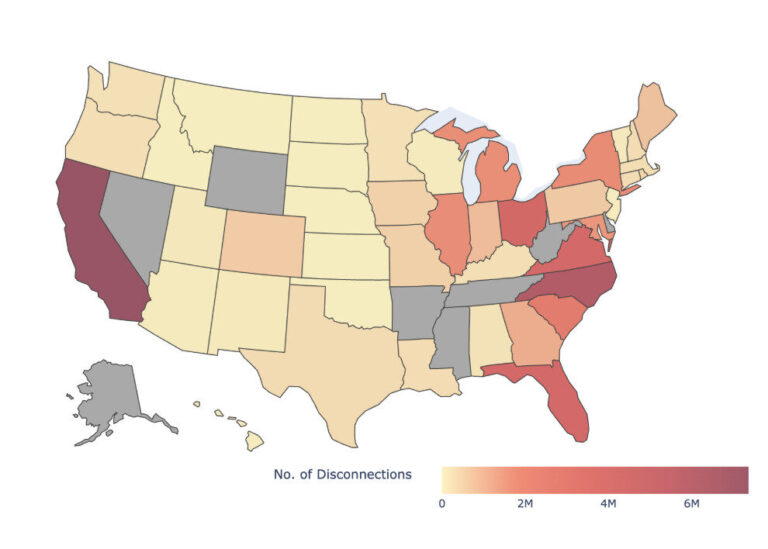Acme Equities: who is the hedge fund trying to buy a teetering New Mexico coal plant?

Acme Equities, a mysterious hedge fund with no experience in the power sector and whose CEO is best known for being fired after he dropped his pants in front of his employers in a bizarre protest, is vying to buy a New Mexico coal plant otherwise slated for closure. The price? One dollar.
The coal plant in question, Units 1 and 4 of the San Juan Generating Station in Farmington, New Mexico, is currently owned by electric utilities, primarily Public Service of New Mexico (PNM), which are planning to retire the plant in 2022.
But Farmington Electric, the municipal utility of the city of Farmington itself, owns 8.5 percent of one of the boilers, and says it wants to keep the plant alive to preserve the jobs and tax base that it provides. The city has an agreement to assume full ownership of the plant from PNM and the other utility owners if none of them want to continue operating the plant after 2022, as reported by the Farmington Daily Times.
On Sunday, the City announced that it had found a potential buyer in Acme Equities. According to a term sheet the city negotiated with Acme, the company is exploring whether it would buy the plant for one dollar and a raft of tax breaks, if it could solve the pesky problem that caused PNM to want to retire the plant in the first place: no one wants to buy the overpriced power.
When asked about the prospective Acme deal in a call with investors yesterday, PNM CEO Pat Vincent-Collawn confirmed that PNM would not buy the power under any circumstances:
“So regardless of what theoretically has been proposed by Farmington, from our view we’re exiting San Juan, and we’ll replace the power accordingly to meet the objectives of — hopefully supporting the energy transition activities in past. But we will in no way accept any sort of PPA or any continued involvement after 2022 for San Juan,” Vincent-Collawn said.
Little known about Acme Equities
Farmington mayor Nate Duckett told the Santa Fe New Mexican on Tuesday that “this group is serious,” speaking of Acme Equity. But little is known of the company, which has no website.
Acme Equities appears to have incorporated with the Delaware Division of Corporations on April 3, 2013. Jason Selch lists himself as Acme’s “co-founder” on a LinkedIn page, saying he has worked there since 2012.
A blogging profile for Selch describes Acme as “a real estate hedge fund with commercial properties important to the oil and gas sector.”
“Mr. Selch and his partners created ACME Equities in 2012 to acquire and manage residential, commercial and other real estate investments in areas with strong potential for energy exploration,” the profile says. “At present, ACME Equities holds properties in North Canton, Alliance and Byesville, Ohio.” Selch’s LinkedIn page says Acme is an “Energy Investment Firm with investments in Distressed Debt, Public Equities, Private Equity, and Real Estate.”
Acme Equities registered with the Ohio Secretary of State’s office as a Delaware-based corporation in December, 2014. An April 2015 issue of an Ohio Oil and Gas Association magazine lists Acme Equities, LLC as a “new member,” and lists Lawrence Heller as the contact person.
Heller was pictured in a photograph signing an agreement with the Farmington city manager published by the Farmington Daily Times on February 23.
The SEC has no records from any company called Acme Equities, though Selch did file SEC forms as “Acme Utica Partners,” in 2013, which lists the same New York City address as did the Ohio oil magazine.
Heller did not respond to an email sent to the address listed in the Ohio oil magazine, and the phone number listed in the SEC forms for “Acme Utica Partners” returned a busy signal after multiple attempts.
Selch’s career to date seems to have focused almost entirely in oil and gas exploration and production, with no experience in electric power.
According to his LinkedIn page, Selch was most recently the director of research for distressed energy for AmTrust Financial Services, a property and casualty insurer, from 2015 to 2018.
Before then, Selch ran his own asset management funds called the Iroquois Energy Fund and Helios Advisors, where Heller also worked, according to SEC filings. The fund was small by hedge fund standards, with $30 million assets under management at its peak, according to an old web page for Iroquois Energy Fund, now offline but archived. Selch “decided to close down Iroquois Energy Fund and returned all capital to investors” after a loss of 6.0 percent in 2014, the page says.
Previously, Selch worked for a larger and well-known fund, Equity Group Investments, from 2006 to 2010, where he says he managed $100 million of investments. He also served on the board of Kuwait Energy, an oil company, at that time.
None of the work that Selch did as an oil and gas investor earned him the notoriety that he gained from a 2005 incident, when he was fired from his job at Wanger Asset Management after 11 years of employment. After new management from Bank of America, which had bought the firm, fired Selch’s colleague, Selch dropped his pants and “mooned” two of his new employers in protest. Bank of America fired Selch, who sued, appealed, and finally lost for good in 2012, leading to a round of tabloid headlines over the incident.
Private equity firms have flirted with distressed coal in the Southwest before, and bailed
The term sheet that Acme signed with the city of Farmington required that Acme find purchasers for the power generated by the San Juan units, though it left blank the amount of power that Acme must sell and the duration of the contracts.
Finding any buyer for the San Juan power will be a difficult, if not impossible, task for Acme. Existing coal-fired power plants like San Juan are no longer cost-competitive compared with the construction of new renewable energy facilities with battery storage in the region.
Tom Sanzillo, the Director of Finance at the Institute for Energy Economics and Financial Analysis, a group which has analyzed the U.S. transition out of coal, said that the City of Farmington was “taking a significant risk in working with financial interests that have little track record with coal plants.”
“The San Juan Generating Station is in financial distress because it cannot produce electricity at a price that is competitive. We have reviewed investment deals all over the country and have not found any that can reverse this fundamental market reality,” Sanzillo added. “The loss of an important employer is a painful process but it will be made worse if another bad bet is made and it fails. A better path is for all of the financial stakeholders to forge a plan to ensure that the tax base is protected, employment opportunities are developed for vulnerable employees and a better plan for economic growth adopted than a coal plant that is economically unsustainable.”
The Navajo Generating Station in Arizona is a similar coal plant facing the same problem: no market exists for the expensive power, meaning the plant is headed for closure, but a local constituency desperate to preserve jobs has sought any buyer possible to keep it operational.
Two firms, investment company Avenue Capital Group and private equity company Middle River Power, both flirted with buying the Navajo Generating Station. Both companies dropped their bids a few months later, with Middle River explaining that “it has not been possible to secure from counterparties commitments to purchase a sufficient amount of power generated from Navajo Generating Station to enable a workable operating paradigm.
The firms also offer a decent comparison point to Acme, about which almost nothing is known. Avenue Capital Group says that it manages $9.6 billion in assets and has 170 employees worldwide. Middle River Power operates or is developing approximately “2,000 MW of natural gas, coal, geothermal and solar power generation facilities,” which it lists on its website.
Reclamation Liabilities “TBD”
The term sheet between Farmington and Acme would exempt Acme from paying any taxes on the plant, as reported by the Farmington Daily Times, undermining the Farmington City Manager’s claim that the deal could “maintain the property tax base for the Navajo Nation, Central Consolidated Schools, San Juan County, San Juan College, Farmington and the State of New Mexico.”
Another clause of the term sheet, not yet reported, keeps open the opportunity of letting Acme off the hook (and keeping the City of Farmington on it) for any environmental or reclamation costs whenever the plant does close.
Under the liabilities section, the term sheet lists several liabilities explicitly before including a footnote, which says “Remediation costs TBD.”
In other words, if Acme does somehow beat the odds and find purchasers for the San Juan Generating Station’s electricity, it might well still close the plant eventually. When that happens, there will be costs to remediate a site that has burnt coal since 1973. As of now, if the Acme deal goes through, the bearer of those costs will be “TBD.”



